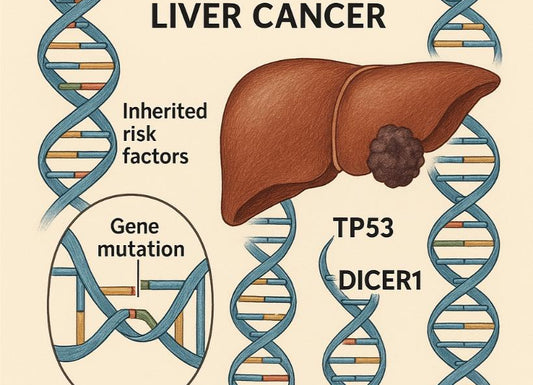Kidney Biopsy: What It Reveals About Your Kidney Health and How to Prepare
 Written By
Blen Shumiye, MD
Written By
Blen Shumiye, MD

If your doctor has recommended a kidney biopsy, you might feel nervous and that’s completely understandable. The idea of a needle procedure can sound intimidating, but knowing what to expect can make a big difference. A kidney biopsy is one of the most powerful tools doctors use to understand how well your kidneys are working, what’s causing kidney problems, and how best to treat them.
In this guide, we’ll break down what a kidney biopsy reveals about your kidney health, the types of biopsies, how to prepare safely, what recovery looks like, and what your results mean.
What is a kidney biopsy and why is it done?
A kidney biopsy is a medical procedure where a small piece of kidney tissue is removed and examined under a microscope. This allows doctors to directly observe how your kidney cells look and function.
Doctors often recommend a biopsy when:
-
You have unexplained kidney problems, such as high levels of protein or blood in your urine.
-
Your kidney function (measured by creatinine or eGFR) is worsening without a clear cause.
-
There’s a need to confirm a specific kidney disease, like lupus nephritis or glomerulonephritis.
-
You’ve had a kidney transplant, and doctors want to check for signs of rejection or inflammation.
In short: A biopsy answers the “why” behind your kidney test results. It shows the cause of damage, how advanced it is, and what treatment is most likely to help.
What conditions can a kidney biopsy detect?
A biopsy helps pinpoint the exact nature of kidney disease, which blood and urine tests alone cannot do. Some of the most common conditions diagnosed through a biopsy include:
-
Glomerulonephritis: Inflammation of the kidney’s filtering units.
-
Diabetic kidney disease: Damage caused by long-term high blood sugar.
-
Lupus nephritis: Autoimmune inflammation from lupus.
-
IgA nephropathy: An immune-related condition that leads to blood in urine.
-
Minimal change disease: Common in children, causing sudden swelling.
-
Acute tubular necrosis: Damage to kidney tubules from lack of oxygen or toxins.
-
Kidney transplant rejection: Identifies whether a transplanted kidney is under immune attack.
Each of these conditions requires a different approach to treatment — which is why biopsy results can change your care plan significantly.
How does a kidney biopsy work?

The most common type is the percutaneous (needle) biopsy. Here’s how it’s typically performed:
-
You’ll lie face down (or on your back if it’s a transplanted kidney).
-
Your skin will be cleaned and numbed with local anesthesia.
-
Using ultrasound or CT guidance, the doctor inserts a thin needle through your back to collect a small kidney sample.
-
You’ll need to stay still while the needle quickly takes one or two samples.
-
The tissue is sent to a pathology lab for microscopic and sometimes molecular analysis.
The entire procedure usually takes 15–30 minutes, though you’ll spend several hours under observation afterward to ensure there’s no bleeding.
What are the different types of kidney biopsy?
There are a few biopsy methods, depending on your condition and health status:
1. Percutaneous kidney biopsy (most common)
-
Uses imaging guidance and a biopsy needle.
-
Performed under local anesthesia.
-
Short recovery time.
2. Transjugular kidney biopsy
-
Done through a vein in your neck if you have bleeding risks or obesity.
-
Sample taken via a catheter threaded to the kidney.
-
Used in patients with liver disease or clotting disorders.
3. Open (surgical) biopsy
-
Done in an operating room under general anesthesia.
-
Used when other methods aren’t possible or a larger tissue sample is needed.
4. Laparoscopic biopsy
-
Uses small incisions and a camera for precision.
-
Faster recovery than open surgery.
What does a kidney biopsy reveal about your health?
When the sample reaches the pathology lab, specialists examine it under high-powered microscopes. They look at three key features:
-
Structure: Whether glomeruli (filters), tubules, or blood vessels appear damaged.
-
Deposits: If immune proteins or abnormal substances are stuck in kidney tissues.
-
Inflammation or scarring: Signs of chronic disease or healing from prior injury.
Based on these findings, your doctor can determine:
-
The type of kidney disease.
-
The severity and stage of damage.
-
Whether it’s acute (sudden) or chronic (long-term).
-
If treatment (like steroids or immunosuppressants) might help reverse the damage.
For example, if your biopsy shows minimal scarring and active inflammation, treatment might restore function. But if there’s extensive fibrosis (scarring), the focus may shift to slowing further decline.
In essence: a biopsy offers a detailed snapshot of your kidney’s health far beyond what blood tests can show.
How to prepare for a kidney biopsy

Preparation is key to keeping the procedure safe and successful. Here’s how to get ready:
1. Discuss your medications
Tell your doctor about all prescription and over-the-counter drugs, including supplements.
You may need to pause blood thinners (like aspirin, warfarin, or clopidogrel) and certain herbal supplements that increase bleeding risk.
2. Blood and urine tests
Before the procedure, you’ll likely have:
-
A coagulation test to check your blood’s ability to clot.
-
Urinalysis to rule out infection.
-
Creatinine and eGFR to assess kidney function.
3. Fasting and hydration
You may be asked not to eat or drink for 6–8 hours before the biopsy, especially if sedation will be used.
4. Arrange transportation
Because you’ll need to rest after the procedure, have a friend or family member drive you home.
5. Ask questions
Understanding what will happen can ease anxiety. Consider asking your healthcare team:
-
How long will I need to stay afterward?
-
What symptoms should I watch for at home?
-
When will results be ready?
What to expect during and after the procedure
During the biopsy
-
You’ll lie still while imaging helps guide the needle.
-
You may feel pressure or a brief pinch, but pain should be minimal due to local anesthesia.
-
The sample collection itself takes just seconds.
After the biopsy
-
You’ll rest flat for about 4–6 hours while nurses monitor for bleeding or discomfort.
-
Most people can go home the same day but should avoid strenuous activity for at least 48 hours.
Common mild side effects:
-
A small amount of blood in your urine for a day or two.
-
Mild back or flank soreness.
Call your doctor immediately if you notice:
-
Persistent bright red blood or large clots in urine.
-
Fever, chills, or increasing pain.
-
Dizziness or weakness (which could signal internal bleeding).
What are the risks of a kidney biopsy?
While generally safe, a kidney biopsy like any medical procedure carries some risks. The most common include:
-
Bleeding: The biggest concern, though usually mild and self-limiting.
-
Infection: Rare, but possible if bacteria enter the biopsy site.
-
Pain or bruising: Temporary and manageable with rest and medication.
-
Arteriovenous fistula: A small abnormal blood vessel connection that often heals on its own.
Your healthcare team takes careful steps to minimize these risks, such as checking your clotting factors and using real-time imaging during the procedure.
How are kidney biopsy results interpreted?

Your doctor and a kidney pathologist will analyze the sample and share the results within a few days to a week. The report will include:
-
Diagnosis: The name of the kidney condition, such as “IgA nephropathy.”
-
Extent of damage: How many glomeruli are scarred or inflamed.
-
Activity level: Whether the disease is currently active or healing.
-
Prognosis: Expected response to treatment and future kidney health.
For instance:
-
If your biopsy shows acute inflammation, medications may quickly improve your kidney function.
-
If it shows fibrosis or irreversible damage, treatment may focus on slowing progression and preventing complications.
Biopsy results also help guide lifestyle and medication decisions, like adjusting blood pressure drugs, avoiding nephrotoxic medications, or modifying your diet to protect remaining kidney function.
If you’d like to learn more about diagnostic tools, explore At-Home Kidney Function Tests: A Comprehensive Guide
How long does recovery take?
Most people recover from a kidney biopsy within one to three days. Here’s what typical recovery looks like:
-
Day 1: Rest and hydration; avoid physical strain.
-
Day 2–3: Light activity is fine; continue to monitor urine color.
-
After 3 days: You can resume normal activities unless your doctor advises otherwise.
Avoid:
-
Heavy lifting for at least one week.
-
Vigorous exercise or sports.
-
NSAIDs like ibuprofen unless approved (can increase bleeding risk).
Your doctor will schedule a follow-up appointment to discuss results and next steps.
What lifestyle steps support kidney healing after a biopsy?
While the biopsy itself doesn’t damage kidney function, it’s a good time to focus on protecting your kidneys long-term.
Simple steps that help:
-
Stay hydrated, unless you’re on fluid restriction.
-
Limit salt to reduce blood pressure strain.
-
Eat a kidney-friendly diet: low in processed foods, moderate in protein.
-
Avoid over-the-counter NSAIDs unless prescribed.
-
Follow your doctor’s plan for blood pressure, diabetes, or autoimmune disease control.
How accurate is a kidney biopsy?
Kidney biopsy remains the gold standard for diagnosing kidney diseases. In most cases, accuracy exceeds 90–95%, especially when enough tissue is collected and interpreted by an experienced renal pathologist.
However, results can occasionally be inconclusive if the sample is too small or the disease affects parts of the kidney not captured by the needle. If that happens, your doctor might recommend a repeat biopsy or rely on clinical findings and imaging for diagnosis.
When should you avoid a kidney biopsy?
A biopsy may be delayed or avoided if you:
-
Have uncontrolled high blood pressure.
-
Have a bleeding disorder or low platelet count.
-
Have an active kidney infection.
-
Are pregnant (alternative imaging may be used).
Your healthcare team will weigh the benefits versus risks carefully before proceeding.
How does a kidney biopsy compare to other tests?
While blood and urine tests show how well your kidneys are working, they don’t explain why something is wrong. Imaging tests like ultrasound or CT scans can show structure and size but can’t identify microscopic changes.
Only a biopsy can reveal:
-
Whether the problem is inflammatory, immune, or scarring-related.
-
How much of the kidney is affected.
-
Whether the disease can be reversed or slowed.
It’s the most definitive way to understand your kidney’s true condition.
When will I get my results, and what happens next?
Results are usually ready within a few business days. Once your doctor receives them, you’ll have a detailed discussion about:
-
Your diagnosis and stage (if kidney disease is confirmed).
-
Treatment options medications, lifestyle changes, or additional testing.
-
Monitoring plans, which may include follow-up labs or at-home test kits.
This is a good time to ask:
-
What’s my next step?
-
Can my kidney function improve with treatment?
-
How often should I be monitored?
Understanding your results helps you take charge of your kidney health.
Related internal resources
Final thoughts
A kidney biopsy is more than just a test, it's a window into your kidney’s true health. It helps your care team understand what’s happening inside your kidneys at the microscopic level, guiding precise and effective treatment.
With the right preparation and aftercare, most people recover quickly and safely. And the insights gained from a biopsy can empower you to make informed choices that protect your kidneys for years to come.
Monitor Your Kidney Health at Home
You can take an at-home kidney function test through Ribbon Checkup and receive your results within days.
References
Clinic, C. (2019, July 8). A kidney biopsy is a procedure that involves using a needle or surgery to remove a sample of kidney tissue. It helps check its health and diagnose conditions. Cleveland Clinic. https://my.clevelandclinic.org/health/procedures/21160-kidney-biopsy
Kidney Biopsy. National Institute of Diabetes and Digestive and Kidney Diseases; NIDDK - National Institute of Diabetes and Digestive and Kidney Diseases. https://www.niddk.nih.gov/health-information/diagnostic-tests/kidney-biopsy
Kidney Biopsy. (2024, August 14). Hopkinsmedicine.org. https://www.hopkinsmedicine.org/health/treatment-tests-and-therapies/kidney-biopsy
Kidney Biopsy. (2025, October 10). National Kidney Foundation. https://www.kidney.org/kidney-topics/kidney-biopsy
Kidney biopsy - Mayo Clinic. (2025). Mayoclinic.org; https://www.mayoclinic.org/tests-procedures/kidney-biopsy/about/pac-20394494
Young, M., & Leslie, S. W. (2025, March 28). Renal Biopsy. Nih.gov; StatPearls Publishing. https://www.ncbi.nlm.nih.gov/books/NBK470275/

Dr. Blen is a seasoned medical writer and General Practitioner with over five years of clinical experience. She blends deep medical expertise with a gift for clear, compassionate communication to create evidence-based content that informs and empowers. Her work spans clinical research, patient education, and health journalism, establishing her as a trusted voice in both professional and public health spheres.



